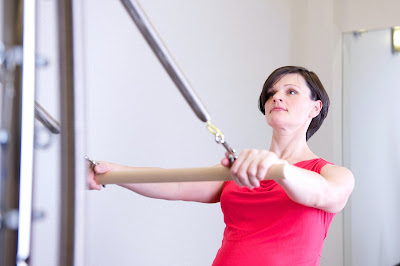Have you tested your aerobic fitness level before? Determining this is not just crucial for athletes who are really fit. In reality, the reverse is true: more research are indicating that those with poor cardiovascular fitness are at a greater risk of dying from heart disease, according to the American Heart Foundation. In other words, the individuals who are in the least fit are the ones who need to increase their cardiovascular fitness level the most.
Exercise works
Although high-intensity exercise is thought to be the most effective approach to raise your fitness level, this form of exercise is not always possible for those who exercise occasionally. Therefore, by evaluating multiple studies on the effects of low-intensity exercise, the researchers revealed some of the advantages of these activities.
🔸First of all, moderate-intensity exercise (not merely high-intensity exercise) may raise the fitness levels of persons who are not fit.
Heartbeat Harmony: Mastering the 4 Rules of Heart-Friendly Walking
🔸Second, persons with the lowest fitness levels will receive the largest reward: the decrease in more than half of deaths from all causes and cardiovascular illnesses happens when the group progresses to the next better level than the least fit group.
That is, a person who changes from a sedentary lifestyle to an active one has a larger chance of dying from heart disease than a person who is already fit and gets somewhat more fit.
🔸You don’t need to workout excessive amounts to attain these outcomes. After examining research including walking, the AHA found that inactive adults following current activity recommendations (150 minutes of moderate intensity exercise per week, such as brisk walking), might increase their cardiac fitness by 10 percent.
🔸Moreover, it is not all. This research, which includes of several studies, found that brisk walkers lowered their body weight by 1.4 percent, body fat by 1.9 percent and systolic and diastolic blood pressure by a total of 2.8 percent without modifying their diet.
The researchers of the study done in the UK claim these findings are small but relevant and that regular physical activities are likely to result in enhancing performance and increasing quality of life.
Heartbeat Harmony: Mastering the 4 Rules of Heart-Friendly Walking
The 4 heart-friendly walking regulations
🔹Ready to get started? Now that you know why walking is so vital to exercise, it’s time to put this study into practice. You may accomplish this as follows:
Aim for roughly 150 minutes of vigorous walking a week. For this, you may workout 5 days a week for 30 minutes a day.
You may undertake these walks at once or do them more than once a day.
🔹During these walks, your average heart rate should be 50 percent to 70 percent of your maximal heart rate. You can monitor this, or if you have a smart bracelet or watch, you can see whether your heart rate is in the fat burning zones.
🔹If your total exercises throughout the week routinely fall below 150 minutes a week, you need to conduct your walks at a little higher intensity to produce results: your heart rate when walking is between 70 percent and 85 percent of your maximum heart rate or on your smart wristband Must be in the cardio area.
🔹When the workouts you undertake become extremely simple, shorten the intervals included in the activity; Intense exercise is still the greatest approach for fit persons to continue to increase their cardiac fitness levels.
The Cardio Lowdown:
Recent news from the American Heart Foundation warns us that low cardiovascular fitness could simply be a red flag, flashing an increased risk of heart disease-related complications. The twist? It’s the ones not taking a victory lap on the fitness scale that may gain the most from a heart-healthy makeover.
Exercise to the Rescue:
As much as we’d all want to embrace high-intensity exercises everyday, reality check — life occurs. So, let’s speak about the unsung hero — low-intensity exercise.
🔸 Moderate Magic: Guess what? Moderate-intensity workouts (yep, not simply the severe ones) may do wonders for people not in the fitness hall of fame.
🔸 Gains for the Underdogs: Here’s the story twist — people at the bottom of the fitness ladder stand to benefit the most. Moving up a fitness grade cuts the danger of all kinds of unpleasant things by nearly half.
🔸 Goals Made Simple: You don’t need to turn into a fitness obsessive. According to the experts at the American Heart Association, merely keeping to the current activity standards (think 150 minutes of moderate-intensity exercise per week, like a brisk stroll) may raise your heart’s fitness game by a cool 10 percent.
🔸 Fitness Beyond Numbers: And here’s the cherry on top. Studies, including ones on brisk walking, spill the beans — habitual brisk walkers dropped some weight (1.4 percent less, to be precise), cut down body fat by 1.9 percent, and even experienced a 2.8 percent reduction in blood pressure. All this without having to forgo your favorite goodies!
Let’s Get Moving:
Now, the fun part — putting all this learning into action. Here’s my opinion on heart-healthy walking, direct from your friendly neighborhood physio:
🔹 Aim for 150 Minutes: Let’s make 150 minutes of brisk walking your weekly date — break it down into 30 minutes a day, five days a week. Easy peasy!
🔹 Heart Rate Vibes: Keep your heart rate humming between 50 and 70 percent of your max throughout your walks. If you’ve got a smartwatch, let it be your fitness BFF.
🔹 Intensity Hacks: If your weekly workout is falling a touch short, bump up the intensity. Aim for a heart rate between 70 and 85 percent throughout your walks. Your smart wristband will be cheering you on.
🔹 Keep the Challenge Alive: Feeling like a walking pro? Mix it up — shorter intervals, ratchet up the intensity. It’s the secret recipe for keeping even the fittest hearts pleased.
So, friends, let’s lace up those shoes, hit the street, and give our hearts the love they deserve! 🏃♀️🏃♂️💓


